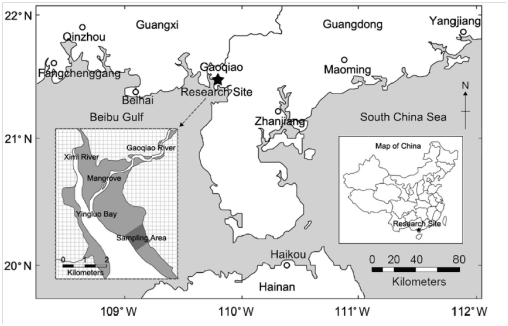作 者:Liu, Y;Wang, M;Wang, WQ;Fu, HF;Lu, CY 影响因子:2.379
刊物名称:Ecosphere
出版年份:2016
DOI:10.1002/ecs2.1312
The frequency, duration, and intensity of extreme cold events are widely regarded as primary constraints on the upper latitudinal limits of mangroves. Little data are available on the consequences of recovery (or lack thereof) of non-floristic components of mangrove ecosystems after a disturbance caused by cold weather. An unusually severe cold wave occurred in southern China in January 2008. The impact of this cold event and the subsequent recovery of mollusks in a Rhizophora stylosa mangrove forest in southern China were evaluated over a 3-yr study from April 2007 to January 2010. The cold event caused significant mortality of mollusks, which was rapidly followed by an increase in the populations of opportunistic species, and then their subsequent collapse within 6 months. Comparison with data collected in April 2007 (before the cold event) revealed that the density, biomass, and species richness of mollusks decreased by 87.5%, 80.6%, and 56.3%, respectively, except for a transient and compensatory increase in the numbers of benthic mollusks (by 47.5%). Arboreal mollusks were more sensitive to the cold event than benthic species, but both groups showed similar recovery trajectories. After 21 months, the density, biomass, and richness of mollusk species still remained 9.4%, 13.2%, and 26.2% lower than pre-event. Full recovery took more than 24 months. In comparison to mangrove vegetation, mollusks inhabiting mangroves appeared to be more vulnerable to cold events, but also recovered faster. In conclusion, it took more than 2 yr for the species richness of mollusks to recover from the cold event, and the rate of recovery was slower for the arboreal type.

Fig.2.Location of the research site at Gaoqiao in southern Yingluo Bay in Lianjiang, Guangdong, China.

